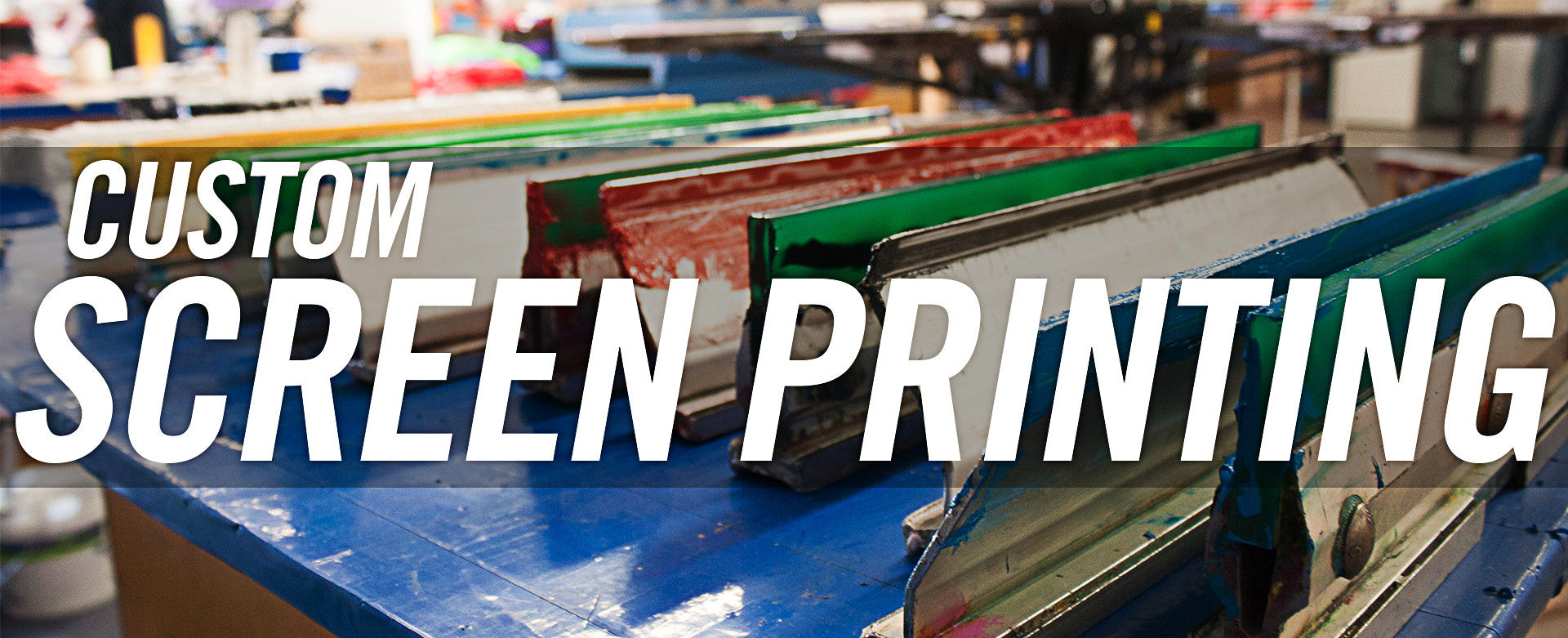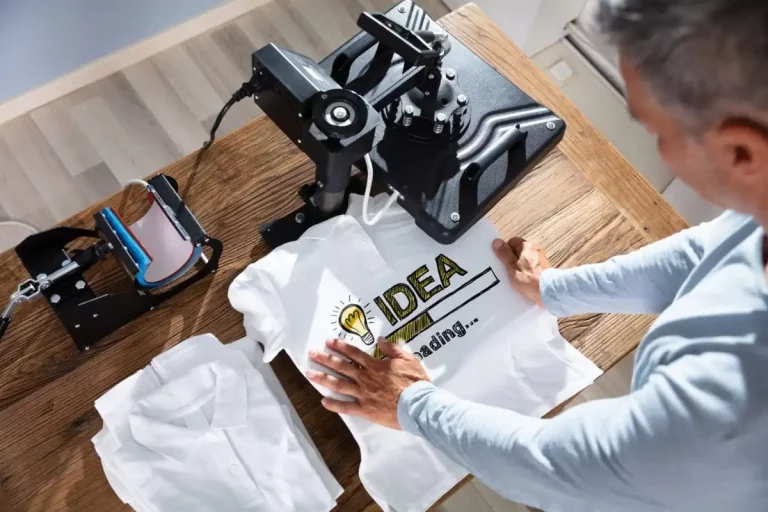Premium Screen Printing Kit for Business Startups
Premium Screen Printing Kit for Business Startups
Blog Article
Display Printing Uncovered: Whatever You Need to Find Out About Tee Shirt and Garment Printing Methods
If you have actually ever questioned how those lively styles finish up on your preferred t-shirts, you remain in the best place. Screen printing is a fascinating method that incorporates art with method, using countless opportunities for creative thinking. Comprehending the fundamentals, from devices to ink choices, can significantly impact your outcomes. All set to check out the vital aspects that make display publishing an art kind? Let's discover the information that can boost your projects.
The Basics of Screen Printing: Exactly How It Functions
When you plunge right into screen printing, you'll discover it's both a science and an art. At its core, screen printing includes producing a stencil, or screen, that permits ink to pass through just in particular areas.
Placement the display over the fabric, after that make use of a squeegee to push ink with the screen onto the garment. Each action is important, and understanding them will elevate your display printing abilities, transforming easy garments into special, expressive items.
Kinds Of Screen Printing Methods
Once you realize the fundamentals of screen printing, it's time to check out the different methods that can boost your styles. One popular approach is traditional screen printing, where ink is pushed with a stenciled display. This strategy is great for bold, vivid shades. There's water-based ink printing, which offers a softer feeling and is green, yet it requires a various approach to treating.
One more choice is plastisol printing, recognized for its sturdiness and vibrant shades, making it a favorite for numerous brands. Experiment with halftone printing to create slope effects and elaborate designs.
Necessary Devices for Display Printing
To accomplish magnificent lead to screen printing, having the right tools is fundamental. You'll need a tough display printing frame, which holds the mesh that transfers your layout onto the garment. Next, purchase high-grade squeegees; these are important for applying ink equally across the screen. You'll likewise call for an excellent exposure device to create your displays, as well as a washout booth for cleaning them after use. A reliable heat resource, like a conveyor dryer or heat press, is crucial for treating your prints to assure durability. Don't neglect a correct work area, geared up with tables and storage for your products. Lastly, protective equipment, such as masks and gloves, will maintain you risk-free from chemicals and inks. With the right devices, you'll be well on your way to producing professional-quality prints.
Picking the Right Inks and Materials
When selecting inks and materials for display printing, you need to consider the sort of ink that works ideal for your job. Think of material compatibility to assure your designs look excellent and last long. Also, check out green ink choices to make your printing process extra lasting.
Types of Screen Inks
Picking the right display ink is crucial for achieving lively, durable prints that meet your job's demands. There are numerous kinds of screen inks to examine. Plastisol ink is popular for its flexibility and convenience of use, providing outstanding color opacity on dark fabrics. Water-based ink, on the other hand, offers a softer feeling and is green, making it suitable for those seeking to minimize their environmental effect. Release inks get rid of dye from the textile, leading to a soft, classic look but call for specific handling. Finally, specialty inks, such as metallic or glow-in-the-dark, can include unique impacts to your styles. Examine your project requirements and select the ink that straightens ideal with your desired end result.

Material Compatibility Factors To Consider
Comprehending textile compatibility is essential for attaining top quality display prints, particularly considering that various materials respond uniquely to numerous inks. When picking inks, think about the textile type-- cotton, polyester, or blends. For cotton, water-based inks function well, using softness and breathability. Polyester, on the various other hand, frequently needs plastisol inks for much better bond and vibrant shades. You might need to use a mix of both types if you're publishing on blends. Always evaluate your inks on example fabric to assure they adhere appropriately and keep color integrity. In addition, bear in mind that textile weight and appearance can impact the last result, so picking the right ink and product combination is vital for your project's success.
Eco-Friendly Ink Options
Environment-friendly inks are ending up being a prominent choice for screen printers that want to decrease their environmental impact while keeping high quality. more info here When picking inks, consider water-based inks, which are less damaging and simpler to cleanse up contrasted to traditional solvents.
Additionally, look for screen printing kit inks made from eco-friendly resources, such as soy or vegetable-based choices. By choosing the ideal inks and materials, you'll not just create stunning layouts but likewise add to a much more lasting printing procedure. Make the switch, and your prints will show your commitment to the setting!
Preparing Your Style for Display Printing

File Layout Demands
To assure your layout looks lively and sharp on material, you'll require to pay close attention to submit layout demands for screen printing. Make sure your design has a clear history to prevent undesirable white edges on your prints. Keep color modes in mind; CMYK is standard for display printing, so convert your RGB makes accordingly.
Shade Separation Strategies
Color separation is an important step in preparing your style for screen printing, and understanding it can significantly boost your print top quality. You'll need to break your layout right into private shades, as each shade requires a different display throughout printing. This accuracy not only assures accurate color representation however likewise simplifies the printing procedure.
Resolution and Dimension
Accomplishing the very best outcomes in screen printing begins with assuring your design has the best resolution and size. Ideally, your artwork ought to go to least 300 DPI (dots per inch) for sharp, clear prints. Your last product could look pixelated and amateur. if you use lower resolution.
When it comes this post to dimension, consider the measurements of your print area. Design your art work to match the last print size, ideally producing it in the actual dimensions you'll be printing. This means, you'll avoid any unexpected scaling issues.
Always inspect your layout in both vector and raster layouts. Vector graphics can be scaled without shedding top quality, making them perfect for screen printing. Preparing appropriately will assure your style looks amazing on every garment!
Step-by-Step Display Printing Process
Screen printing is a vibrant process that permits you to create vibrant layouts on numerous surfaces. To obtain started, you'll require a display, solution, and your picked ink.
Put ink onto the display and use a squeegee to press the ink through the stencil onto the fabric. Raise the screen carefully and allow the print dry. You've efficiently screen published your design.
Tips for Successful Display Printing Projects
While you're diving into your display printing jobs, keep in mind that prep work is vital to success. Begin by collecting all your materials-- inks, garments, displays, and squeegees. A tidy work area aids protect against undesirable mistakes, so clean prior to you begin.
Following, verify your art work is high-resolution and properly sized for your garment. Examine your screen for correct direct exposure and clean it completely to stay clear of smudges. When blending your inks, adhere to the producer's standards to achieve the best uniformity.
Throughout printing, apply even stress with your squeegee for regular outcomes. Don't hurry; take your time to confirm each print meets your requirements. After printing, allow your garments dry totally prior to dealing with or packaging them.
Lastly, always keep an example of your job for future referral. This means, you can assess your development and enhance your strategies over time. Happy printing!

Frequently Asked Concerns
Just how Long Does It Require To Establish a Display Printing Job?
Establishing up a screen printing work usually takes around half an hour to an hour. You'll prepare the displays, mix inks, and readjust the press. The moment differs based on complexity and experience, so remain arranged!
Can I Print on Various Material Enters Using the Very Same Strategy?
Yes, you can print on various material types making use of the exact same technique, however you'll need to adjust your settings and inks. Some fabrics soak up ink in a different way, so exploring guarantees the ideal outcomes for each product.
What Prevail Mistakes to Avoid in Display Printing?
When screen printing, avoid typical errors like using the incorrect ink, ignoring proper direct exposure times, or avoiding pre-press checks. Always examine your configuration and keep clean displays to assure high quality results each time.
Exactly How Can I Properly Tidy and Preserve My Screen Printing Equipment?
To appropriately clean and preserve your screen printing tools, you should routinely clean screens with appropriate solvents, examine squeegees for wear, and ensure all devices are stored completely dry and dust-free. Consistency enhances and avoids pricey repair services performance.
Is Display Printing Eco Friendly Compared to Other Techniques?
Screen printing can be a lot more eco-friendly than other techniques, particularly if you use water-based inks and eco-conscious materials. By picking lasting products and practices, you minimize waste and decrease your influence on the planet.
Screen Printing Uncovered: Whatever You Need to Know Regarding Tee Shirt and Garment Printing Methods
At its core, display printing entails producing a pattern, or display, that permits ink to pass via just in particular locations. Position the screen over the fabric, then use a squeegee to push ink via the screen onto the garment. One preferred approach is typical display printing, where ink is pressed through a stenciled display.When selecting inks and materials for screen printing, you need to take right into account the kind of ink that functions finest for your job.
Report this page